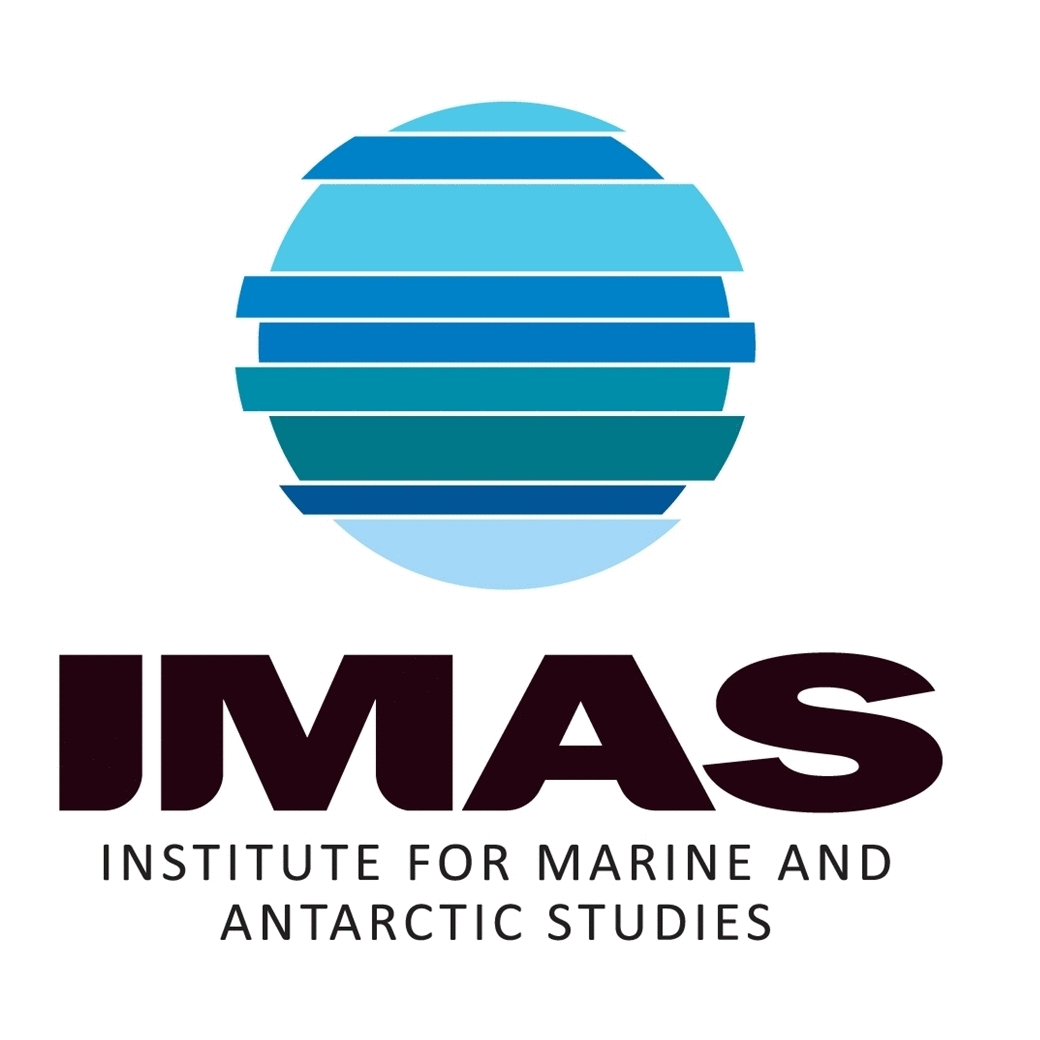Range expansion of the sea urchin Centrostephanus rodgersii leads to loss of taxonomic diversity in a kelp bed habitat, eastern Tasmania
The long spined sea urchin Centrostephanus rodgersii (Diadematidae) has recently undergone poleward range expansion to eastern Tasmania (southeast Australia). This species is associated with barrens habitat which has been grazed free of macroalgae, and therefore has potentially important consequences for reef structure and biodiversity.
This study used urchin removal experiments from barrens patches in eastern Tasmania to monitor the subsequent response of the macroalgae relative to unmanipulated barrens patches.
In removal patches, there was a rapid proliferation of canopy-forming macroalgae (Ecklonia radiata and Phyllospora comosa), and within 24 months the algae community structure had converged with that of nearby areas without urchins.
Faunal species richness was comparatively low in barrens habitat, with C. rodgersii grazing activity resulting in an estimated minimum net loss of approximately 150 taxa compared with intact macroalgal habitats.
Simple
Identification info
- Date (Creation)
- 2008-06-10T09:00:00
Principal investigator
- Purpose
- To examine the impact of the range-extending sea urchin Centrostephanus rodgersii on reef habitat structure and associated biodiversity within the extended range by using controlled sea urchin removal experiments.
- Credit
- Funding: School of Zoology, TAFI (University of Tasmania) Core grant (i.e. from State Govt) and grant from Tas Abalone Council; some funding from FRDC 2001/044
- Status
- Completed
Principal investigator
Principal investigator
- Spatial representation type
- Text, table
- Topic category
-
- Biota
Extent
))
Temporal extent
- Time period
- 2003-11-19 2006-11-30
Vertical element
- Minimum value
- 9
- Maximum value
- 15
- Identifier
- EPSG::5715
- Name
- MSL depth
- Maintenance and update frequency
- Not planned
Resource format
- Title
- Excel
- Date
- Edition
- 2003
- CAAB - Codes for Australian Aquatic Biota v2
-
- 25 211001
- Centrostephanus rodgersii
- 54 080001
- Ecklonia radiata
- 54 102001
- Phyllospora comosa
- Global Change Master Directory (GCMD) Earth Science Keywords Version 8.0
- Keywords (Discipline)
-
- Temperate Reef
- Keywords (Theme)
-
- Canopy coverage
- Substrate coverage
- Species coverage
Resource constraints
- Classification
- Unclassified
Resource constraints
- Use limitation
- The data described in this record are the intellectual property of S. Ling.
Resource constraints
- Linkage
-
http://i.creativecommons.org/l/by-sa/2.5/au/88x31.png
License Graphic
- Title
- Creative Commons Attribution-Share Alike 2.5 Australia License
- Website
-
http://creativecommons.org/licenses/by-sa/2.5/au/
License Text
- Other constraints
- The citation in a list of references is: citation author name/s (year metadata published), metadata title. Citation author organisation/s. File identifier and Data accessed at (add http link).
Associated resource
- Title
- Climate Change and a range extending sea urchin
- Date (Creation)
- 2011-09-14T00:00:00
- Language
- English
- Character encoding
- UTF8
- Environment description
- Excel spreadsheets.
- Supplemental Information
- Data published in: Ling, S.D. 2008. Range expansion of a habitat-modifying species leads to loss of taxonomic diversity: a new and impoverished reef state. Oecologia 156:883-894 (online version: doi 10.1007/s00441-008-1043-9) Paper is chapter 4 in Scott Ling's PhD Thesis (submitted 2008): CLIMATE CHANGE AND A RANGE-EXTENDING SEA URCHIN: CATASTROPHIC-SHIFTS AND RESILIENCE IN A TEMPERATE REEF ECOSYSTEM, University of Tasmania, Hobart.
Content Information
- Content type
- Physical measurement
- Name
- Canopy coverage
- Identifier
- http://vocab.nerc.ac.uk/collection/P06/current/UPCT
- Name
- Percent
- Name
- Substrate coverage
- Identifier
- http://vocab.nerc.ac.uk/collection/P06/current/UPCT
- Name
- Percent
- Name
- Species coverage
- Description
- Presence/absence of species
Identifier
- Description
- Number of individuals (urchins) within each quadrat
Identifier
- Code
- Abundance of biota
Distribution Information
Distributor
Principal investigator
- Title
- Microsoft Excel (xls)
- Date
- Edition
- 2003
- OnLine resource
- DATA - Algal recovery data following urchin removal from incipient barrens [direct download]
- OnLine resource
- DATA - Presence/ absence data of algal and faunal taxa in kelp, barrens, and recovered patches [direct download]
- OnLine resource
-
imas:FR1_CRJohnson_Expansion_sea_urchin_loss_taxonomic_diversity_kelp_GV
MAP - Site of Centrostephanus removal and algal monitoring
Resource lineage
- Statement
- Experimental manipulation Six barrens patches (3-6m in diameter), supporting 8-116 resident C. rodgersii, were randomly assigned as either 'removal' or 'unmanipulated' [control] patches. The temporal response of the algal community following urchin removal was assessed using a non-destructive spatially nested sampling design: 3 replicate incipient barrens patches within each treatment (removal vs unmanipulated) and 4 replicate quadrats (0.25m2). Treatments were maintained and patches sampled ~2 months for 36 months. Monitoring algal response At each sampling occasion the quadrats were photographed, with each quadrat dissected by a grid of 10x10 equidistant lines, and percent cover of taxa and bare rock was estimated. Taxa were identified to species where possible, or functional group. Habitat and faunal structure of 'recovered' macroalgal beds - destructive sampling All experimental patches were destructively sampled at experiment end. The abundance and length of canopy-forming macroalgae were measured, and total biomass of canopy and understorey was calculated from dry weights (drying algal samples at 70°C for 48hr).Benthic fauna were sampled from each quadrat by sealing all excised macroalgal habitat and associated invertebrates in plastic bags. The remaining benthic fauna were extracted from the substratum using a venturi suction sampler connected to 1mm mesh bags. Fauna were extracted by agitating in seawater and sieving at 1mm. Species were identified to species level where possible, or taxonomic group.
- Hierarchy level
- Dataset
- Hierarchy level
- Dataset
Platform
Identifier
- Code
- diver
Metadata
- Metadata identifier
- dbae9f60-3679-11dd-9409-00188b4c0af8
- Language
- English
- Character encoding
- UTF8
Point of contact
Type of resource
- Resource scope
- Dataset
- Metadata linkage
-
https://metadata.imas.utas.edu.au/geonetwork/srv/eng/catalog.search#/metadata/dbae9f60-3679-11dd-9409-00188b4c0af8
Point of truth URL of this metadata record
- Date info (Creation)
- 2021-03-30T00:23:36
- Date info (Revision)
- 2021-03-30T00:23:36
Metadata standard
- Title
- ISO 19115-3:2018
Overviews
Spatial extent
))
Provided by

 TemperateReefBase Geonetwork Catalogue
TemperateReefBase Geonetwork Catalogue